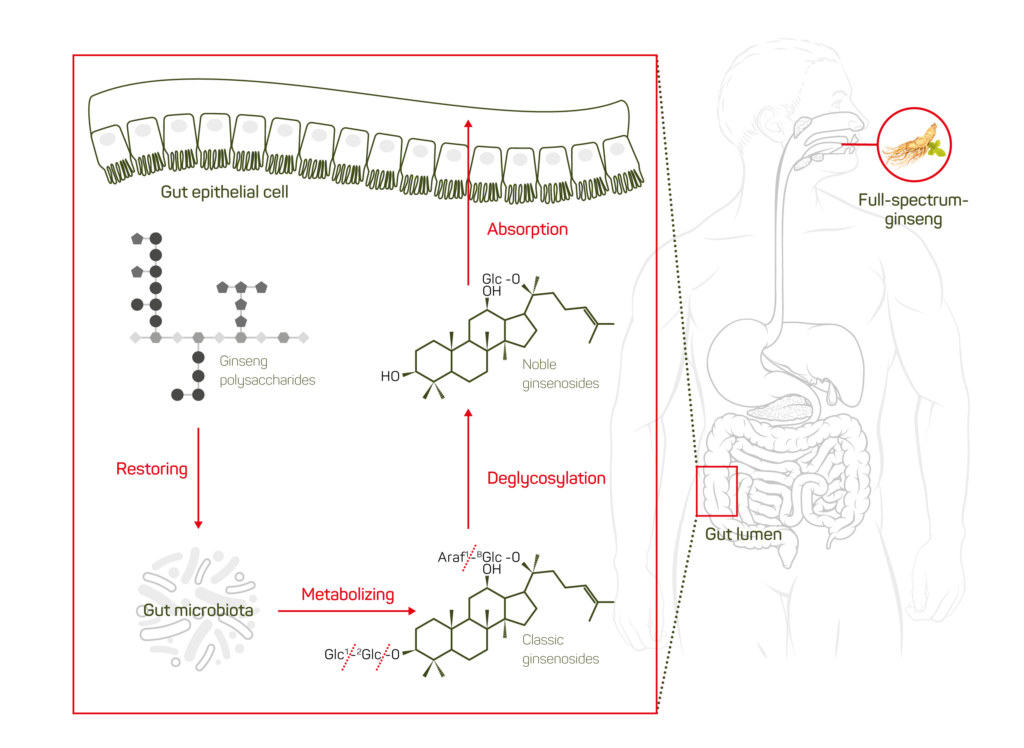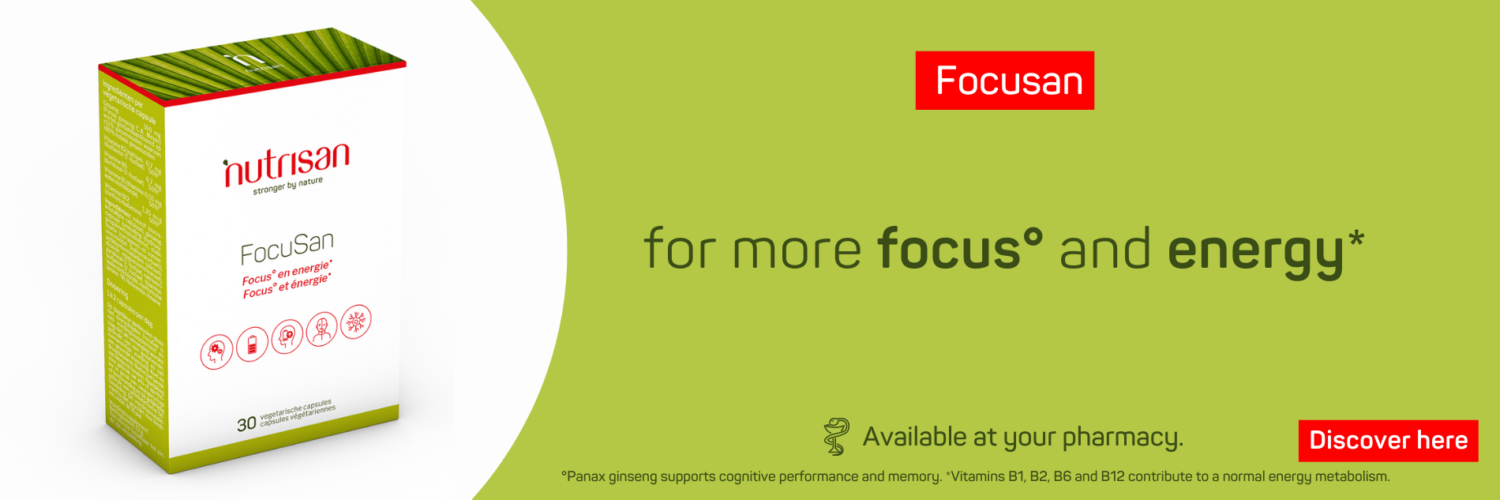Panax ginseng has a positive influence on your physical and mental endurance. This pearl from the oriental health care helps strengthen the natural resistance and supports your vitality, concentration and memory.
Panax ginseng is a plant whose root has been used for thousands of years in Oriental medicine to proactively support health and vitality. Panax is derived from Greek: ‘Pan’ means ‘everything’ and ‘axos’ means ‘healing’. A promising name for a plant with exceptional qualities.

How is Panax ginseng produced?
Panax ginseng can be found in the mountains of East Asia in shady forest surroundings. However, the plant is not often found in the wild because of its soil exhaustive character. The cultivation of Panax ginseng requires a lot of maintenance. Usually ginseng plants are grown for 4 to 6 years before they are harvested for health purposes. After the fifth year the number of total ginsenosides decreases. After that the fields have to be left fallow for about 10 years before they can be cultivated again. Panax ginseng is a fragile plant, which is why pesticides and fungicides are commonly used in normal cultivation. This results in unwanted chemicals and heavy metals.
Fortunately, innovative and less environmentally damaging ways of growing this plant are constantly being sought.
For example, Panax ginseng is produced by a Belgian company that uses the innovative process: hydroponics. In this way, the growing conditions can be strictly controlled, under the best growing conditions, sterile with no use of pesticides and fertilizers and this way there is no soil depletion. Yet without loss of quality or content of noble ginsenosides.
Active ingredients of Panax ginseng
Ginsenosides are generally considered to be the active ingredients of this plant. But also the polysaccharides present should not be forgotten, they also play an important role in many applications.
What are ginsenosides?
The term ginsenosides covers a class of molecules that are commonly found in ginseng. These molecules are steroidal saponins. Ginsenosides are mostly amphiphatic molecules, this means they have both hydrophobic and hydrophilic properties.
According to the difference in position and quantity in sugar groups, the ginsenosides are divided into 3 types: protopanaxadiol (PPD), protopanaxatriol (PPT) and oleanolic acid type ginsenosides. There are more than 100 different ginsenosides. The different classic ginsenosides can be reduced to the smaller basic molecule by splitting off malonyl, acetyl and sugar groups . These smaller molecules free of the large sugar groups are called noble or ‘weird’ ginsenosides. Various researchers and studies have attributed a higher bioactivity to the ‘weird’ ginsenosides.
The ‘weird’ or noble ginsenosides are only naturally present in a low level in ginseng. That is why the classic ginsenosides have to be converted in different ways to their smaller, noble form.
According to Korean tradition, the harvested ginseng roots are gently steamed. This is how ‘red ginseng’ is obtained. In addition to the colour change from white to red ginseng, the ginsenosides change into ‘weird’ ginsenosides and therefore also the bioactivity at the same time. The classic molecules can also be converted into noble ginsenosides by the intestinal bacteria. However, the conversion from classical to ‘weird’ form is not always carried out as efficiently by the intestinal bacteria. That is why it is important that a ginseng powder already contains a high level of ‘weird’ ginsenosides.
Why are these noble or “weird” ginsenosides important?
These noble ginsenosides are more easily absorbed from the intestine than the classic ginsenosides. Because they have become smaller due to the removal of the sugar groups compared to the large structures of the classic ginsenosides. If the molecules are not absorbed from the intestine, they cannot have any further effect on the body.
What is the difference between a Full-Spectrum powder and an extract?
A Totum powder contains the complete nutrition matrix of the root, including various polysaccharides. These indigestible polysaccharides have a prebiotic effect and therefore a positive influence on the intestinal flora. Lastly, the positive influence of the polysaccharides on the intestinal flora also results in a better conversion of the classic ginsenosides to ‘weird’ ginsenosides.


